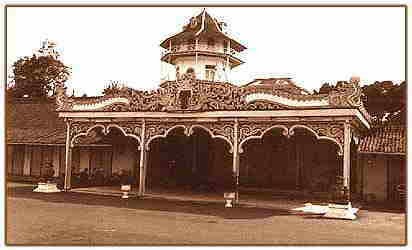

present the article at a meeting or conference and to distribute copies of the article to the delegates attending such meeting.make copies and distribute such copies (including through e-mail) of the article to research colleagues, for the personal use by such colleagues (but not commercially or systematically, e.g.make copies (print or electronic) of the article for your own personal use, including for your own classroom teaching use.As an author you (or your employer or institution) may do the following: Retained Rights/Terms and Conditions of Publicationġ. Theorema, P., 2011, Sistem Pendukung Keputusan Pemilihan Mobil Menggunakan Metode Simple Multi Attribute Rating Technique (smart), Ilmu Komputer. Sulistyanto, I., 2016, Revitalisasi Situs Masjid Kauman-Pleret Sebagai Upaya Rekonstruksi Kehidupan Religi pada Zaman Kerajaan Mataram Islam, Jurnal Teknik Sipil dan Arsitektur Vol 19, No 23 (2016) ISSN: 0852-2561 dan Purwaningsih, A., 2015, Rancang Bangun Sistem Basis Data Desa Wisata untuk Daerah Istimewa Yogyakarta, (diakses pada 7 Oktober 2018)

dan Jassin M.R.T., 2017, Sistem Pendukung Keputusan dalam Penentuan Prioritas Pengembangan Kawasan Wisata Bawah Laut, JNTETI, Vol. Wiyatiningsih, 2015, Global – Lokal: Kreativitas Meruang Sebagai Strategi Keberlanjutan Desa Wisata Puton Bantul, Konferensi Nasional II Forum Wahana Teknologi Yogyakarta, 10 Agustus 2015, ISBN 977-6-0.

dan Sutanto, A.T., 2011, Desain Dan Perencaaan Taman Wisata yang Berwawasan Mutu dan Lingkungan Serta Berbasis Teknologi Informasi (Studi Kasus : Twa Dam Raman), Jurnal Arsitektur Vol.2 No.1 System testing shows that manual calculations and system calculations are the same, so that the system developed successfully and validly in analyzing input data and can be used as a tool to evaluate the potential of tourism objects. The use of SMART method can determine the final result in the form of feasibility ranking based on the criteria value of an object. Based on the stages of the research that have been carried out and the results of system testing it can be concluded that, the developed system can be used to analyze tourism potential. The analysis was carried out using the SMART method based on the criteria for the Community-Based Tourism approach. The method of data collection uses questionnaires to obtain data sampling of several tourist objects. This study will develop a computer-based system to support the analysis of priority tourism potential. The development of tourist attractions in the village of Pleret is still not maximal because the priorities are not yet directed. The application of the Smart Village concept involves many stakeholders and policies that accommodate all interests in the region.


 0 kommentar(er)
0 kommentar(er)
